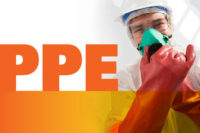Overview: Fog limits the effectiveness of Personal Protective Equipment (PPE) for eye and face protection. According to the American National Standards Institute (ANSI), it is one of the three most significant barriers to their use, ahead of lack of comfort and fit and scratching. If lenses are fogged, people won’t wear them. If workers can’t see, they could have accidents.
Fog forms on a surface when water vapor in air condenses in fine droplets. A good anti-fog (AF) coating should prevent the formation of such droplets, but not all AF coatings are the same. Typical AF products perform well right out of the package. But after use and cleaning, the coatings will lose effectiveness and come off over time.
State-of-the-art premium permanent AF coatings are more durable, washable, and better performing but aren’t always used or necessary in all environments.
This whitepaper presents an update on the newest AF technologies, end-user experiences, manufacturer recommendations, and industry-specific best practices for spectacles, goggles, face shields, welding helmets, and full-facepiece respirators in the following key discussion sections from ISEA member company experts:
- How They’re Made
- Update on State-of-the-Art AF Technologies
- No U.S. Standard
- Manufacturer Recommendations
- AF Care and Maintenance
- Industry-specific best practices
- Users Weigh In
Link to get access: https://safetyequipment.org/isea-anti-fog-whitepaper/







